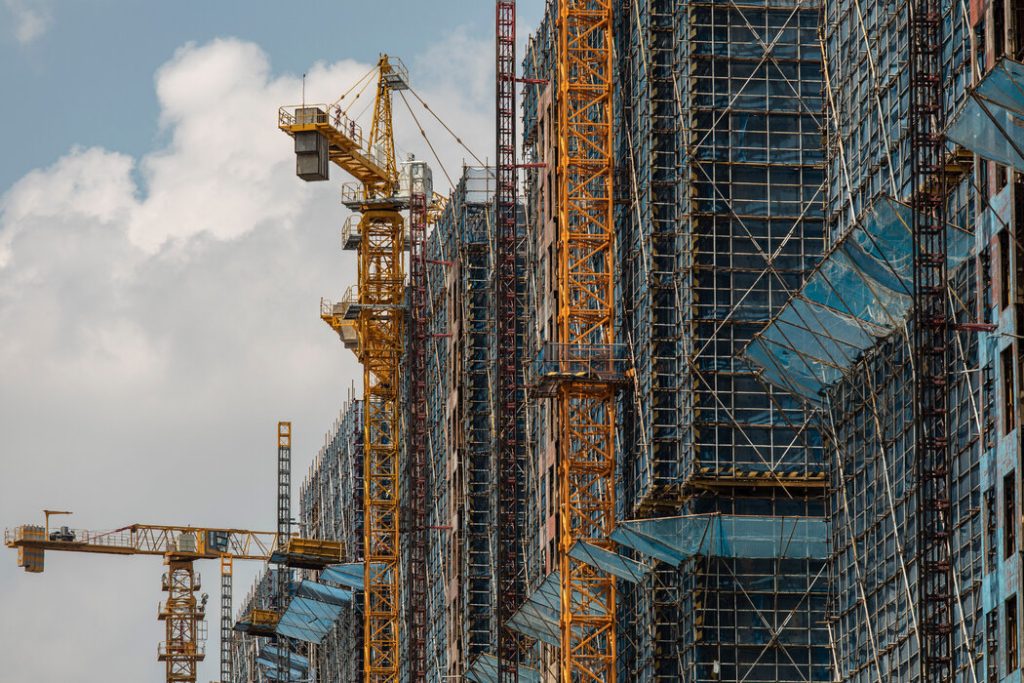Introduction
Interest rates play a pivotal role in shaping the dynamics of the real estate market. Central banks use interest rates as a tool to control inflation, stabilize the economy, and encourage or discourage borrowing and spending. In recent years, as inflationary pressures have risen globally, many central banks, including the Federal Reserve in the United States, the European Central Bank (ECB), and others, have raised interest rates to combat these pressures.
While the immediate effects of higher interest rates on the real estate market are often well-documented—such as slowing home sales, reduced affordability, and higher borrowing costs—the long-term impact is more complex and may unfold over several years. The ripple effects of interest rate hikes can influence everything from housing prices and rental markets to construction activity and the broader economic landscape.
In this article, we will explore the long-term consequences of rising interest rates on the real estate market, analyzing the effects on property values, housing affordability, investment strategies, and overall market stability.
1. Impact on Housing Prices
a. Short-Term Effects: Cooling Demand
When central banks increase interest rates, mortgage rates typically follow suit. Higher mortgage rates make home loans more expensive, which can have an immediate effect on housing demand. As borrowing becomes more costly, potential buyers may delay or reconsider purchasing homes. In turn, the reduced demand puts downward pressure on home prices, particularly in high-cost housing markets.
- Mortgage Affordability: With higher interest rates, monthly mortgage payments rise, making homes less affordable for first-time buyers and those with limited financial flexibility. In some cases, buyers may need to downgrade their expectations or choose smaller, less expensive properties. As a result, housing prices could stagnate or decline in the short term as buyers adjust to the new cost structure.
b. Long-Term Effects: Price Adjustments and Market Stabilization
Over the long term, higher interest rates can lead to a more gradual decline in home prices or a prolonged period of stagnation. However, the extent of this effect depends on several factors, such as the level of demand in the housing market, the supply of homes, and the overall health of the economy.
- Price Correction: In markets that have experienced rapid price appreciation due to low interest rates or speculative investment, a rise in interest rates could prompt a market correction. Properties that were previously overpriced may see a more substantial price adjustment as demand weakens. The speed and extent of price corrections will depend on regional economic conditions, housing supply, and the overall rate of interest hikes.
- Market Stabilization: Over time, real estate markets may find a new equilibrium as buyers and sellers adjust to the higher interest rate environment. While prices may not return to their previous peak levels, markets could stabilize once the initial shock of interest rate hikes subsides. This could lead to slower but steadier growth in property values over the long term.
2. Effects on Housing Affordability
a. Rising Monthly Payments
One of the most significant long-term effects of higher interest rates on the real estate market is the impact on housing affordability. As mortgage rates climb, buyers will face higher monthly payments on their loans, which could price many out of the market or force them to reconsider their purchasing decisions. The longer the period of elevated interest rates, the more pronounced this effect will become.
- Affordability Crisis: In markets with already high home prices, higher interest rates can create an affordability crisis. Families who could have previously qualified for larger loans may now only be able to afford smaller homes, leading to greater demand in the lower end of the market. In contrast, the upper end of the market may see a drop in sales, as high-income buyers are also sensitive to the increased borrowing costs.
- Strain on Renters: Rising mortgage rates often lead to increased demand for rental properties, as fewer people can afford to buy homes. This can push rental prices higher, exacerbating the affordability problem for renters. In high-demand urban areas, this could contribute to rent inflation, making it harder for middle and low-income individuals to find affordable housing.
b. Generational Impact on First-Time Buyers
Higher interest rates can disproportionately affect first-time homebuyers, who are typically more vulnerable to fluctuations in borrowing costs. Since first-time buyers usually do not have significant equity or savings, the higher monthly mortgage payments resulting from interest rate hikes may prevent them from entering the housing market altogether.
- Delayed Homeownership: For many young people, interest rate hikes could delay their ability to purchase a home, potentially pushing homeownership further out of reach. This delay in entering the market could lead to long-term changes in generational homeownership patterns, with younger generations waiting longer to purchase homes or opting to rent for a more extended period.
3. Impact on Housing Market Liquidity
a. Slower Home Sales
With higher interest rates, the liquidity of the real estate market tends to decrease. Buyers are less inclined to make large financial commitments, and sellers may hesitate to list their properties due to the prospect of reduced offers or prolonged selling timelines. This results in fewer transactions and less market turnover, which can slow down the overall dynamics of the housing market.
- Market Stagnation: As mortgage affordability declines, potential buyers may be discouraged from entering the market, and existing homeowners may hold off on selling, reducing the number of available properties. This stagnation can be particularly pronounced in markets that were previously overheated, where price growth was unsustainable, and demand was fueled by cheap credit.
- Price Discoveries: With fewer transactions taking place, it may take longer for the market to reach a new price equilibrium. Sellers who are unwilling to lower their asking prices may see their properties sit on the market for longer periods, resulting in a period of price discovery where buyers and sellers attempt to agree on a fair value in the new interest rate environment.
4. Impact on Real Estate Investment and Development
a. Reduced Investment in Real Estate
Higher interest rates tend to make real estate less attractive to investors. For those looking to finance property acquisitions through loans, higher mortgage rates reduce the profitability of leveraged investments. For institutional investors and real estate developers, rising borrowing costs mean that large-scale projects become less feasible due to higher financing costs.
- Decreased New Construction: Higher borrowing costs can lead to a slowdown in the construction of new homes, especially in the residential sector. Developers may put off or cancel projects if they no longer meet desired returns on investment. This can contribute to a reduction in housing supply over time, especially in markets where new construction is critical to meeting demand.
- Shift in Investment Strategies: As borrowing costs rise, investors may shift their strategies to focus on lower-risk, lower-return investments or other asset classes such as bonds or commodities. Real estate may no longer be as attractive, particularly for leveraged investors, who may find it harder to achieve the same level of returns due to higher interest payments on loans.
b. Increased Focus on Rental Properties
With fewer people able to afford homeownership due to higher interest rates, demand for rental properties is likely to increase. This creates opportunities for real estate investors to capitalize on the growing rental market. Investors may turn their attention to residential rental properties, multifamily housing units, and other income-producing assets, as the potential for steady rental income becomes more attractive in a higher-rate environment.
- Rent Growth and Cap Rates: While rental demand may rise, the increased demand for rental properties could also drive up rental rates. Investors seeking long-term returns may find that rising rents provide an offset to higher financing costs. Additionally, capitalization rates (cap rates), which determine the value of a property based on rental income, could shift as rental income becomes a more significant factor in investment valuations.

5. Broader Economic Implications of Higher Interest Rates on the Real Estate Market
a. Effects on Economic Stability
The real estate market is often considered a barometer for the overall health of the economy. A cooling housing market due to higher interest rates can signal broader economic slowdown. The construction sector, real estate agencies, and home improvement industries may all experience a downturn, affecting employment and economic growth.
- Employment Impact: Construction workers, real estate agents, mortgage brokers, and related professionals may face job losses or reduced incomes as fewer housing transactions take place. This can have a cascading effect on the economy, leading to lower consumer spending and overall economic slowdown.
- Wealth Effect: The housing market also has an impact on household wealth. When home values rise, homeowners feel wealthier and tend to spend more. However, when home values stagnate or decline due to higher interest rates, consumer confidence may fall, and household spending may decrease, contributing to a reduction in economic activity.
Conclusion
The long-term effects of interest rate hikes on the real estate market are far-reaching and multifaceted. While the immediate consequences may include reduced housing affordability, slower home sales, and decreased investment, the broader impact can influence housing prices, market liquidity, and economic stability over time.
Higher interest rates create a more cautious borrowing environment, which can lead to lower demand, reduced property values, and increased challenges for first-time buyers. At the same time, the real estate market may experience a shift toward rental properties, with investors seeking alternative avenues for growth.
In the long run, the real estate market will adjust to these new conditions, but the pace and extent of this adjustment will depend on factors such as supply and demand dynamics, construction activity, and broader economic conditions. Policymakers, investors, and homebuyers must remain vigilant and adaptable in this evolving landscape, as the real estate market continues to respond to shifting interest rates and economic trends.

















































